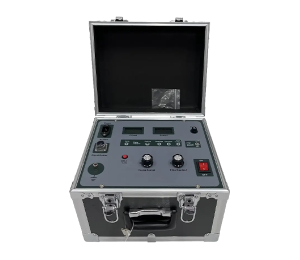 English
English


potentiometric technique
Potentiometric Technique An Overview
The potentiometric technique is a widely used analytical method in chemistry that measures the voltage of an electrochemical cell to determine the concentration of ions in solution. This technique is highly versatile and can be applied across various fields, including environmental monitoring, pharmaceuticals, food safety, and industrial applications. In this article, we will explore the fundamental principles of potentiometry, the components involved, and its applications.
At the core of the potentiometric technique is the principle that the voltage generated by a galvanic cell is directly related to the concentration of specific ions in solution, according to the Nernst equation. This equation illustrates how the potential (voltage) of an electrochemical cell varies with the concentration of ions, revealing the relationship between electrical potential and chemical concentration. Potentiometry operates under the assumption that the temperature and activity of the ions remain constant.
The primary components of a potentiometric system include electrodes, a reference electrode, and a potentiometer. The measuring electrode, also known as the indicator electrode, responds to specific ions in the solution, generating a potential that can be measured. Selectivity is vital here, as the electrode must be sensitive to the ion of interest while being relatively insensitive to other ions present in the solution. On the other hand, the reference electrode maintains a constant potential regardless of the solution’s composition, creating a stable baseline for measurements. Common reference electrodes include the silver/silver chloride electrode and the calomel electrode.
One of the most popular applications of the potentiometric technique is in pH measurement. A glass electrode, which is sensitive to hydrogen ions (H⁺), serves as the indicator electrode. The pH meter measures the voltage generated by the glass electrode in a solution and converts this potential difference to a pH value based on calibration. This versatility makes pH meters an essential tool in laboratories and industries where maintaining specific pH levels is crucial.
potentiometric technique

Potentiometry also finds its application in ion-selective electrodes (ISEs), which allow for the selective measurement of various ions. Ion-selective electrodes are designed to selectively interact with specific ions, such as sodium (Na⁺), potassium (K⁺), or calcium (Ca²⁺), and can be used to measure their concentrations in complex solutions. These electrodes are invaluable in clinical laboratories for analyzing blood, urine, and other bodily fluids.
In addition to pH measurement and ion analysis, potentiometric techniques can detect heavy metals in environmental samples. For instance, ion-selective electrodes can be employed to analyze lead (Pb²⁺) or mercury (Hg²⁺) levels in water samples, helping to monitor pollution and ensure compliance with environmental regulations. This application has become increasingly important as concerns over water quality and safety continue to rise globally.
Moreover, the potentiometric technique is essential in the pharmaceutical industry, where it aids in drug formulation and quality control. For instance, determining the concentration of active pharmaceutical ingredients (APIs) in formulations ensures that products meet safety and efficacy standards. By employing potentiometric titrations, pharmaceutical scientists can accurately assess the quality of their products and maintain compliance with regulatory requirements.
While the potentiometric technique is a powerful tool, it has limitations. Interference from other ions in a sample can affect the accuracy of measurements, and the technique generally requires careful calibration and maintenance of electrodes. Furthermore, the response time of some electrodes may be longer compared to other analytical techniques, which could hinder real-time analysis.
In conclusion, the potentiometric technique is a fundamental analytical method with extensive applications across various industries. Its ability to measure ion concentrations with high precision and sensitivity makes it invaluable in fields such as environmental monitoring, pharmaceuticals, and food safety. As technology advances, we can expect further refinements and innovations in potentiometric methods, paving the way for even more accurate and reliable measurements in the future. This ongoing evolution will undoubtedly enhance our understanding of chemical processes and support efforts to ensure safety and quality across many domains.
-
Differences between open cup flash point tester and closed cup flash point testerNewsOct.31,2024
-
The Reliable Load Tap ChangerNewsOct.23,2024
-
The Essential Guide to Hipot TestersNewsOct.23,2024
-
The Digital Insulation TesterNewsOct.23,2024
-
The Best Earth Loop Impedance Tester for SaleNewsOct.23,2024
-
Tan Delta Tester--The Essential Tool for Electrical Insulation TestingNewsOct.23,2024





